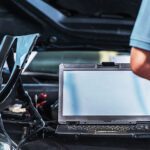EV Charging Connectors are the Foundation of Advancing Vehicle and Charging Technologies
A growing number of automakers are set to turbocharge electric vehicle adoption in the years ahead. Charging connector designs support this evolution.
By Levon Altunyan, Product and Marketing Manager, and Stuart Denny, Sales Manager, JAE Europe
Although electric vehicle (EV) technology has made great strides in recent years, it is arguably still at a very early stage of development. Future growth requires a completely new mindset from all players to push continued innovation and make e-mobility attractive for high-volume markets. Connectivity solutions suppliers are supporting these goals with new connector, cable, sensor, and antenna solutions that advance sustainable power, high-speed connectivity, and rapid EV charging capabilities in automotive systems.
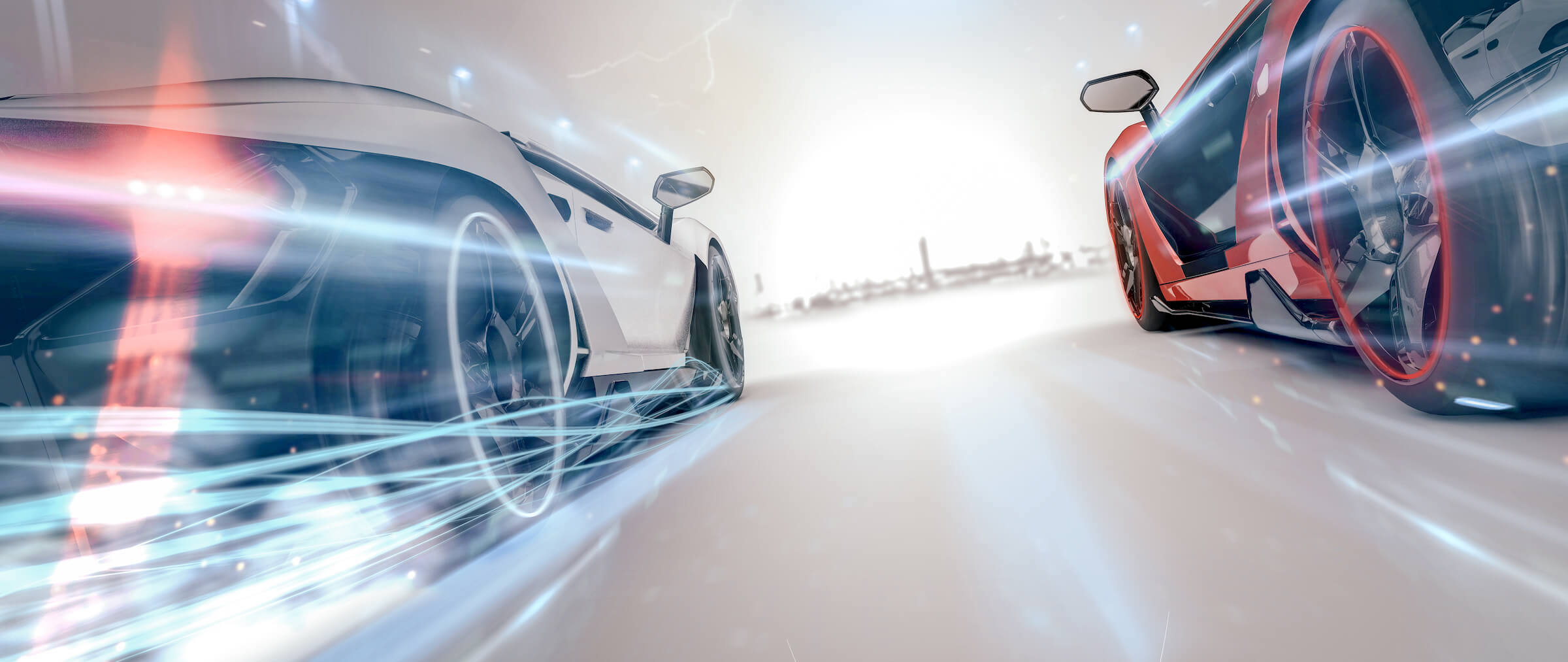
In 2020, Germany’s EV market surpassed California’s for the first time, as consumers chose EVs by Daimler, BMW, and Volkswagen. Tesla is also building a factory near Berlin.
EV systems require small, lightweight, versatile, rugged, and proven-safe components tested and qualified to one or more stringent automotive industry standards to ensure reliable performance. The multitude of electronics systems in modern vehicles increases significantly with the electronics content needed for EV powertrains, making it especially important to reduce the size and numbers of cables needed. The miniaturization of all components, including connectors, helps reduce cable volume and vehicle weight. Simplifying the serviceability of these complex and interconnected systems is also important.
The demand for electric vehicles is booming in many countries around the world, due to stricter environmental regulations and government incentives as well as to rising consumer demand. Consumers have become more receptive to EVs as ranges increase, charging options become more available, vehicle choices increase, and price tags come down. Significant advances in battery technologies have been a key driver in recent innovation in performance, range, and cost reduction.
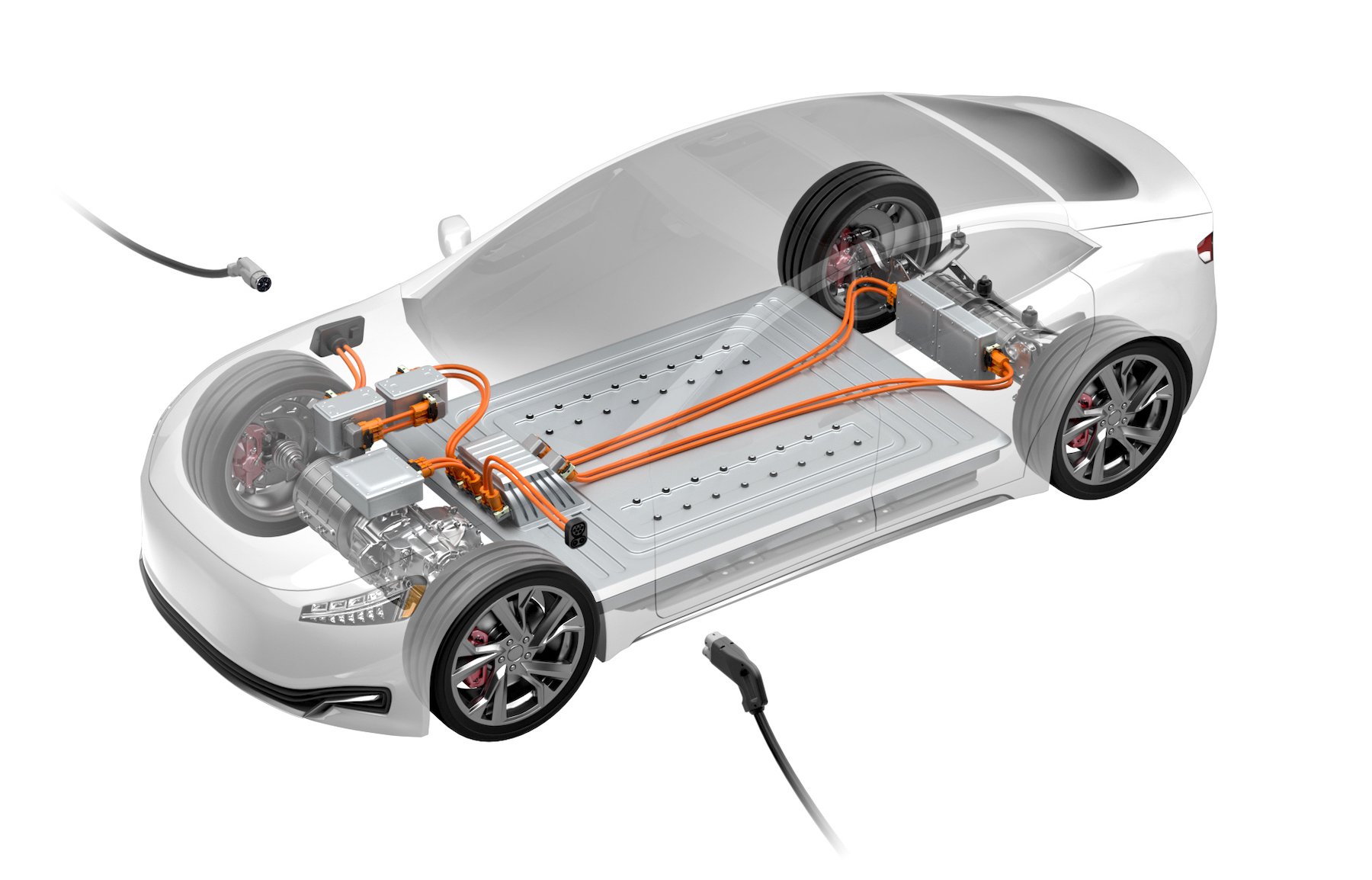
EV charging strategies have greatly expanded, with the help of fast-charging technologies and easy-to-use charging connector designs. JAE offers a variety of charging connectors designed to satisfy several different standards and markets around the world.
Various Interface Connectors Enable EV Charging
Currently, multiple charging connectors exist to serve various global markets, as standards differ by country and region. In 2005, the first EV charging standard, CHAdeMO, arrived. This DC protocol uses a latching connector that delivers voltage to the vehicle only when locked into position in the vehicle. CHAdeMo was followed by the Combined Charging System (CCS) standard, which iss used throughout Europe and North America, the Guobiao standard (GB/T), used in China, and OEM-specific charging interfaces, such as Tesla’s proprietary charging plug.
There is an increased call to make EV charging solutions as low maintenance as possible across all the charging interfaces. Although there is no global standard for EV charging connectors, the CCS (also called Type 2) quick-charge connector interface is fast becoming the de facto choice for the European market. Tesla is also making its Model 3 cars available in the EU with a CCS connector that can access both Tesla’s Supercharger network and third-party chargers.
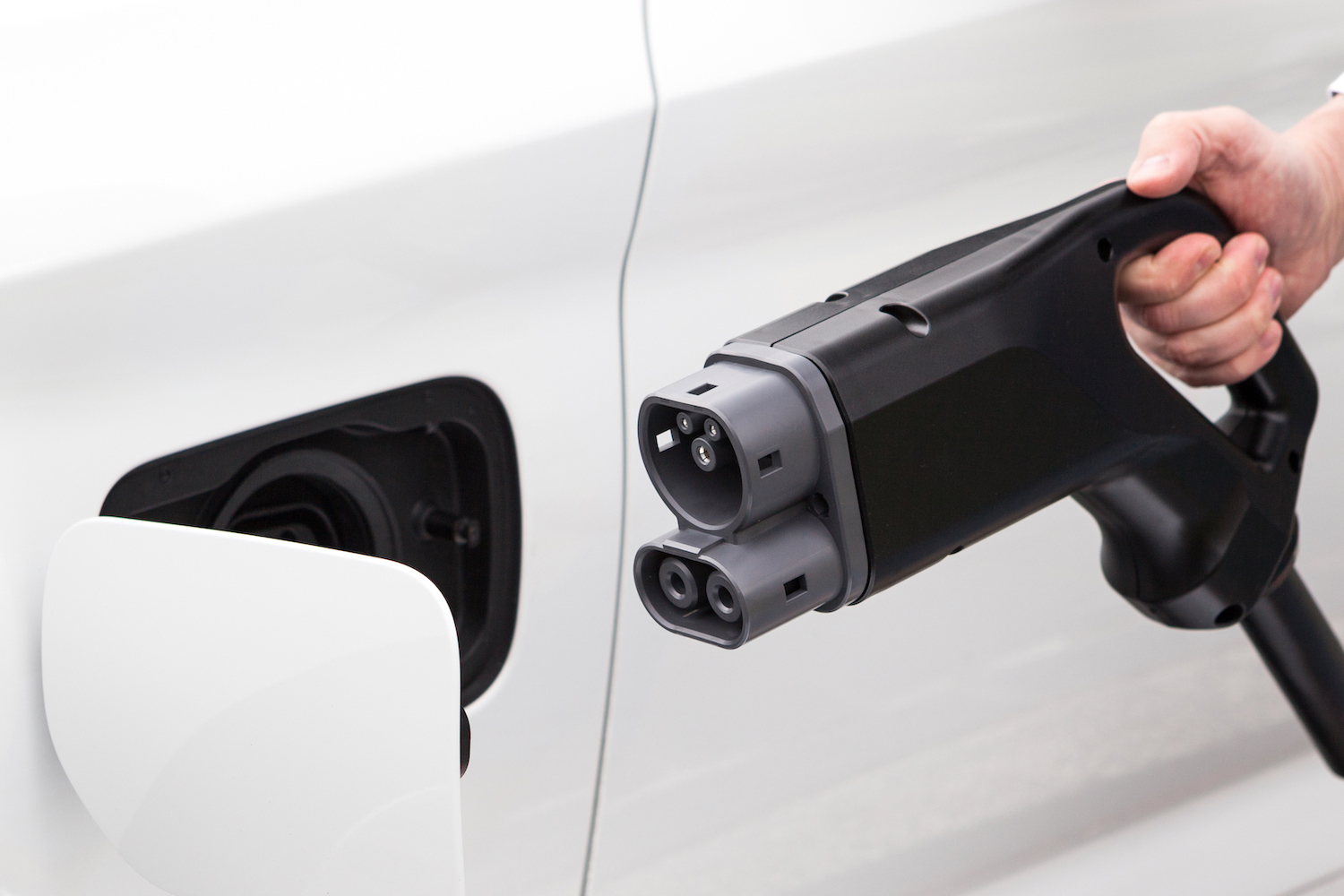
JAE’s charging interface connectors, ranging from the quick-charge CHAdeMO connector it released in in 2011 to the newer KW04 CCS type pictured here, have helped advance EV technologies.
In order to reduce the total cost of adapting existing vehicle charging connectors to work across charging platforms, some suppliers are considering a product with a structure that allows only the mating part of the connector to be replaced. To ensure safety, a double insulation structure adopted from the highly reliable CHAdeMO specification would protect the live connector components from moisture and prevent short circuits caused by water ingress, even if the exterior is damaged due to unexpected circumstances.
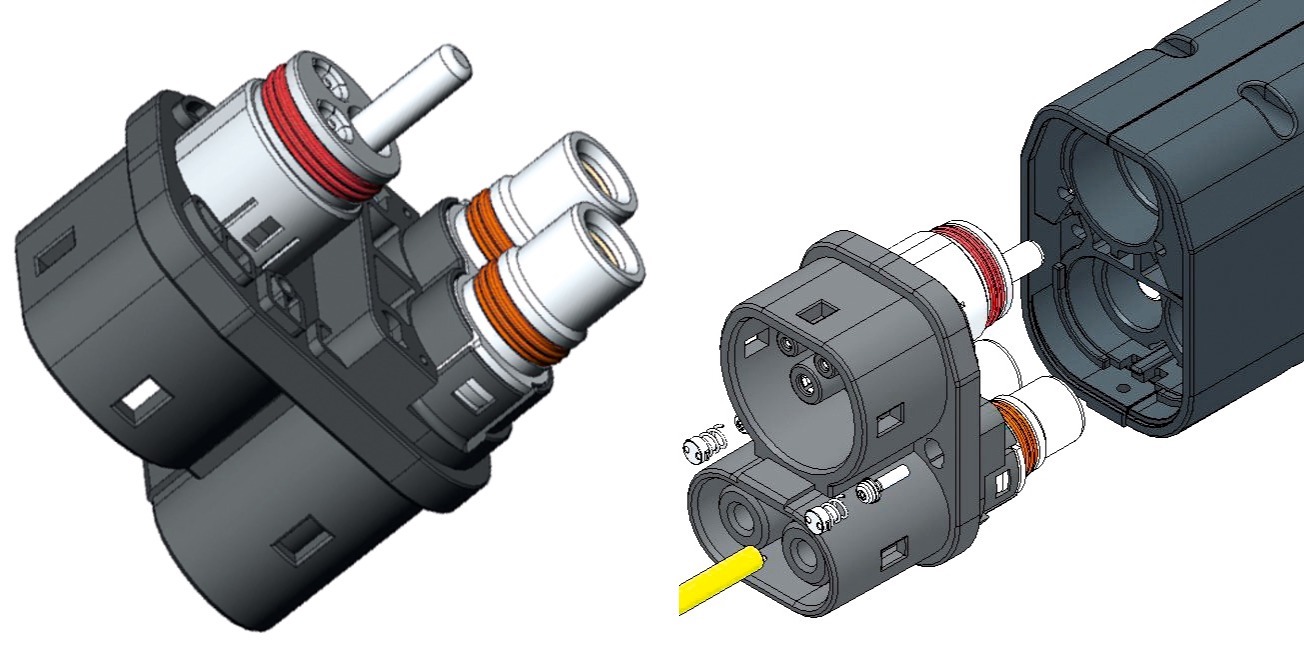
The plug interface of JAE’s KW04 connector is designed to be replaced if needed. This can be done while the cable is still attached to the charging unit.
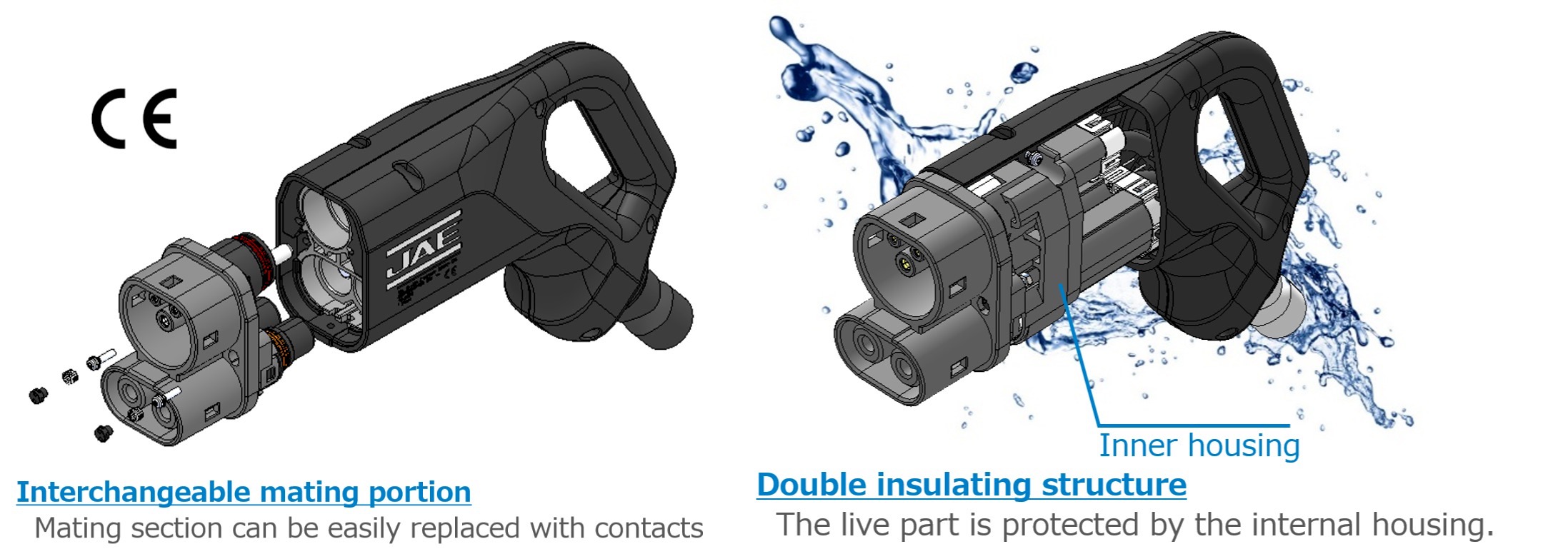
JAE’s KW04 connector has a double insulation structure that protects the interior components from water intrusion. This design ensures that a short circuit will not occur even if the exterior is breached or damaged.
Increasing Demand for V2X CE-Certified Solutions
As the EV market expands, demand is increasing for vehicle-to-everything (V2X) charging connector solutions. UL- and CE-certified plugs, socket outlets, vehicle connectors, and vehicle inlets that meet IEC 62196-1 and 62196-3 standards ranging from 25A to 60A are expanding to meet this demand. Mid-range cable solutions are also growing. Over-qualified cables have more copper wire than is needed, which adds unnecessary weight and cost. Companies including JAE have developed EV charging cables especially designed to support the lightweight, compact, and economic design goals standard for these applications.
Charging systems play a key role in supporting the power grid as well. To promote the introduction of renewable energy sources with large output fluctuations, the practical application of advanced systems such as V2G (vehicle-to-grid) and V2H (vehicle-to-home), which control the charging and discharging of EVs, are being implemented in conjunction with solar arrays that inject more power into the grid.
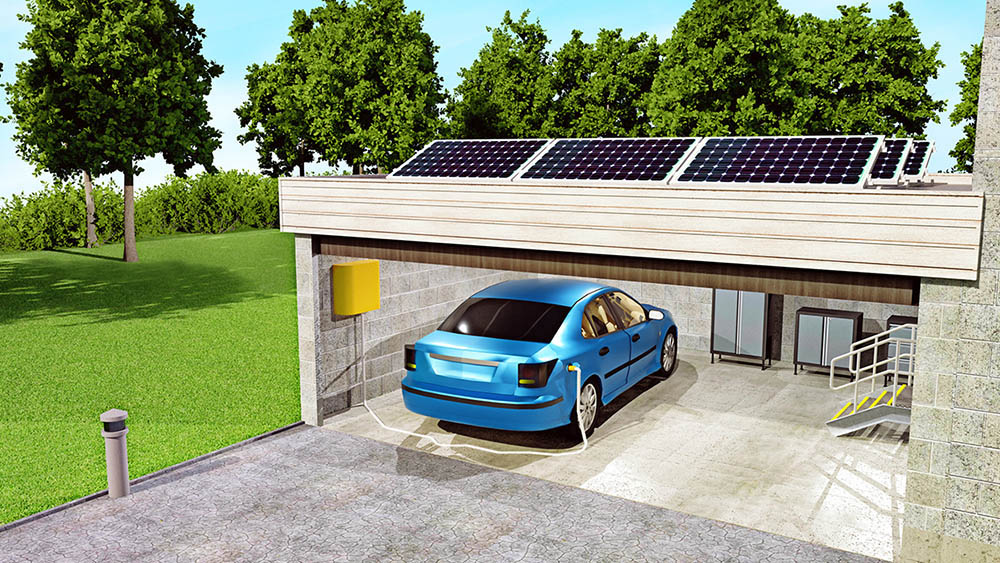
V2H and V2G strategies allow EVs to serve as backup batteries for homes in times of power outages. Adding solar power to these systems can inject even more energy, and the excess can be sent back to the grid. Managing the demand and load will challenge utility companies as EV adoption increases, but BMW and Tesla have pilot programs aimed at better managing this impact.
The V2H guidelines set by CHAdeMO specify a charge/discharge connector system. This system utilizes the large-capacity batteries installed in EVs as a V2H discharge product for homes and offices and vehicle-to-grid technology to regulate power supply and demand over a wide network. CHAdeMO has led the standardization in charge/discharge systems such as V2H, which are now used in Japan and in the midst of demonstration trials in Japan, Europe, and other countries.
As EV adoption continues to grow, powerful connectors that can support EV charging will play a key role in both the development of our future automotive landscape, as well as contribute to grid and residential energy systems.
Learn more about JAE’s EV charging solutions.
